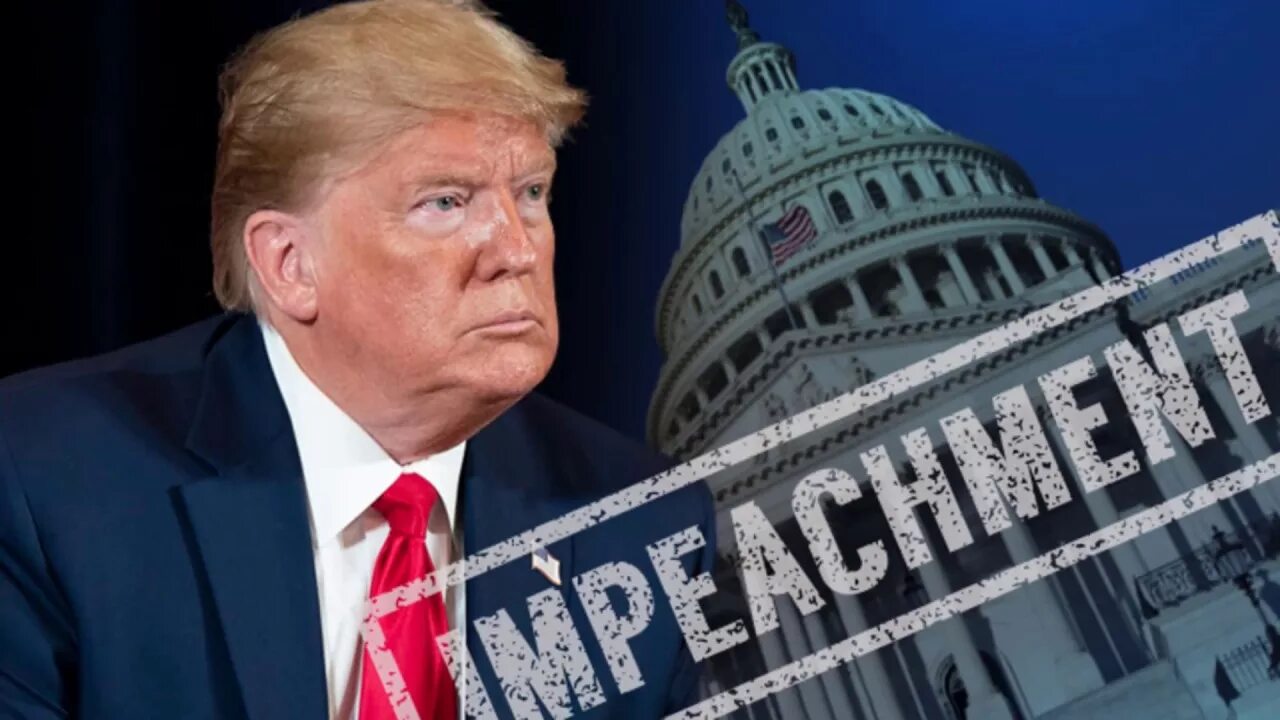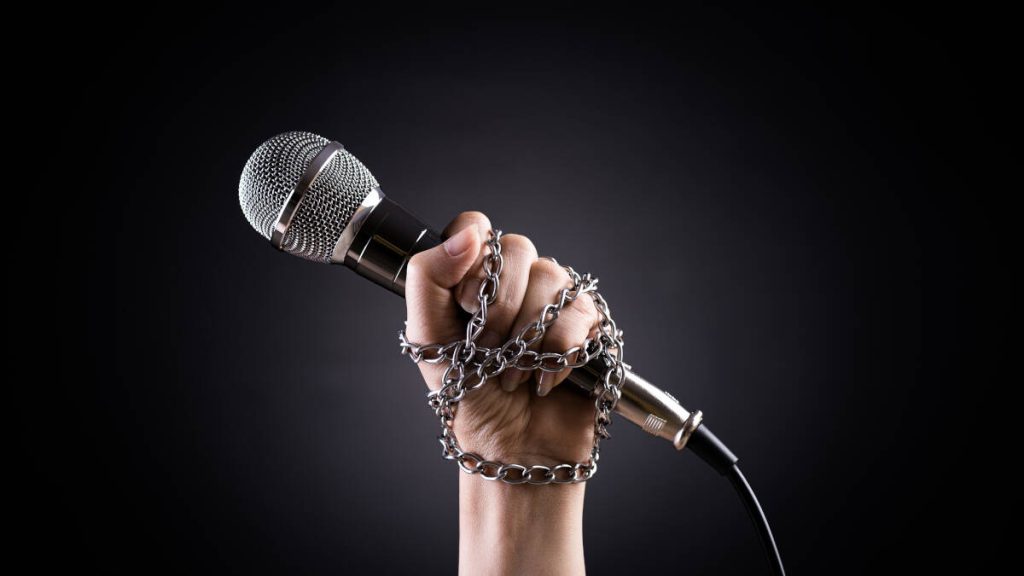Throughout April, the American community and international media have been talking about impeachment of US President Donald Trump.
And now on 28 April, Congressman Thanedar has announced the initiation of impeachment proceedings against Trump.
He brings seven articles of impeachment against Trump.
The charges against Trump include obstruction of justice, abuse of power, bribery and corruption, and ‘tyranny,’ largely based on the president’s rigid consolidation of power during his second term.
Impeachment in the US is a complex process with roots in English parliamentary practice. It is a mechanism for holding top officials accountable for abusing power and violating the public trust. But in today’s political landscape, impeachment is increasingly seen not only as a legal but also as a political tool.
– Historical Roots: Impeachment was borrowed from English practice, where it served to punish political offences that undermined the state. The American Founding Fathers narrowed the standard by limiting it to treason, bribery, and ‘other high crimes and misdemeanours,’ emphasising that it should apply to actions detrimental to the state.
– Constitutional framework: The US Constitution gives Congress the power to impeach and remove the President, Vice President and other ‘civil officers’ (federal employees). This is an important element of checks and balances designed to prevent abuse of power and corruption.
– Grounds for impeachment: The term ‘other high crimes and misdemeanours’ includes significant abuse of power, misuse of funds, neglect of duty, corruption, restriction of parliamentary rights and betrayal of public trust. These definitions are broad enough to leave room for interpretation.
– Purpose of impeachment: To protect the public interest rather than a punitive measure for a particular individual. Impeachment is an instrument to protect the state from actions that could harm it.
– Features of the procedure: The right to trial by jury does not apply to impeachment proceedings. The trial in the Senate is presided over by the Chief Justice of the U.S. Supreme Court. The President does not have the right to pardon impeached persons.
Impeachment procedure in the US: from indictment to removal
As has already become clear, the US system of checks and balances is based on the impeachment procedure, which allows Congress to hold top officials accountable. However, how exactly does this process take place, and what nuances determine its outcome?
1. Bicameral structure and division of responsibility:
A key feature of the impeachment process is its division between the House of Representatives and the Senate. The House of Representatives has the exclusive power of impeachment, that is, the power to bring charges of offences that could lead to removal from office. The Senate, on the other hand, serves as the court where the case is heard and a verdict is rendered. This division of responsibility emphasises the checks and balances inherent in the US Constitution and prevents the concentration of power in one hand.
2. Initiation of the process:
The impeachment process can be initiated in a variety of ways:
– By a resolution or statement of charges introduced by a member of the House of Representatives.
– A request for an investigation by any person, including members of the House, a grand jury, or the state legislature.
– An appeal by an outside investigative body.
Importantly, the House of Representatives has the sole discretion to initiate impeachment proceedings, regardless of the source of the request. This emphasises the independence of the House in making impeachment decisions.
3. Investigation and decision-making in the House of Representatives:
An impeachment investigation is generally conducted by a subcommittee of the House Legal Committee, although more recently several standing committees working in concert have also performed this function. The scope of the investigation may vary depending on the circumstances. The investigation may be entirely independent or may rely on documents provided by external organisations.
At the conclusion of the investigation, the full House of Representatives votes on the articles of impeachment. If the articles of impeachment are approved, the House selects the managers (managers) who will represent the prosecution in the Senate.
4. Senate Trial:
A full trial takes place in the Senate, where the House managers act as prosecutors and the accused has the right to a defence. A two-thirds majority vote of the Senate is required for conviction. In the event of a conviction, the official is removed from office. The Senate may also vote to disqualify the official from holding federal office in the future.
5. Grounds for Impeachment:
According to congressional sources, grounds for impeachment can be roughly divided into three categories:
– Misuse or abuse of office.
– Behaviour incompatible with the functions and purposes of the office.
– Abuse of office for improper purposes or for personal gain.
However, the grounds for impeachment ‘do not all fit neatly and logically into the categories’, emphasising the subjectivity and political nature of the process.
6. Potential opportunities and limitations:
The impeachment procedure is a powerful tool to hold top officials accountable, which can prevent abuse of power and protect the Constitution. However, the process also has its limitations:
– Politicised: Impeachment proceedings are inevitably subject to political infighting, as members of Congress make decisions based not only on legal arguments but also on partisan interests.
– High threshold for conviction: The need for a two-thirds majority of the Senate makes conviction extremely difficult, especially in a politically polarised environment.
– Ambiguity of grounds for impeachment: The lack of clear and unambiguous definitions of grounds for impeachment leaves wide room for interpretation and political manipulation.
History Lessons from Clinton and Nixon
Throughout US history, the House of Representatives has initiated impeachment proceedings against 20 people, including 15 federal judges, a senator, a cabinet member and three presidents (Andrew Johnson, Richard Nixon, Bill Clinton). Donald Trump became the fourth U.S. president to have a procedure launched against him. Not all cases reached the Senate, and only eight people were convicted, all of whom turned out to be federal judges. Let’s turn to the two most famous cases:
The Clinton case: the sex scandal and its aftermath
The impeachment of President Bill Clinton in 1998-1999 was triggered by the Monica Lewinsky sex scandal. Subsequent prosecutions led to charges of perjury and obstruction of justice against Clinton. Independent Counsel, specifically appointed to investigate the alleged offences, submitted a detailed report to the House of Representatives describing the actions he believed could be grounds for impeachment.
The Nixon Case: Abuse of Power and the Watergate Scandal
President Richard Nixon resigned before impeachment proceedings were completed, but the House Judiciary Committee’s approval of three articles of impeachment against him remains an important precedent. Nixon was accused of obstruction of justice in connection with the Watergate scandal, abuse of power (using federal agencies against political opponents), and refusal to cooperate with investigations. Despite the lack of a final vote in the House of Representatives, this case was a classic example of a situation in which the actions of a president who abuses his power undermine confidence in the institution of the presidency.
Twice in the crosshairs: attempts to impeach President Trump
Donald Trump’s first presidency was marked by two impeachment proceedings initiated by the House of Representatives. However, neither of them resulted in his removal from office, as the Senate twice found him innocent of all charges.
The first impeachment stemmed from a phone call with the president of Ukraine, Volodymyr Zelensky. Trump asked Zelensky to launch investigations into his political rival in the upcoming 2020 election and into unsubstantiated allegations of interference by Ukrainian organisations in the 2016 presidential election. In parallel, under Trump’s leadership, $400 million in military aid to Ukraine was suspended. The details of the conversation were made public by an intelligence informant, after which Trump himself published an abridged version of the conversation.
After the hearing, the committee recommended and then the House of Representatives approved two articles of impeachment. The first article accused Trump of abuse of power, pointing to his use of presidential powers to pressure Ukraine to interfere in American elections. Providing military aid and organising Zelensky’s visit to the White House were made conditional on agreeing to the said investigations. It was alleged that these actions were done for personal political gain and were corrupt in nature. The second article accused Trump of obstructing the impeachment investigation by ignoring subpoenas and refusing to cooperate with the House of Representatives. These actions were seen as undermining the constitutional order and violating the rights of the House.
The House of Representatives voted for impeachment on 18 December 2019, but the referral to the Senate did not take place until 15 January 2020. In the end, the Senate acquitted Trump on both charges.
The second impeachment was announced to President Trump at the end of his term, after the events of 6 January 2021, when his supporters stormed the U.S. Capitol to prevent the approval of the election results and the victory of Joe Biden. The House of Representatives reacted swiftly to the incident. The legal committee, without further investigation, used publicly available data on the president’s actions on 6 January, and a week later the House of Representatives voted in favour of a single article of impeachment, charging Trump with sedition.
Although the impeachment was announced before the end of Trump’s presidency, the Senate’s consideration of the case began after he left office. A majority of senators voted in favour of finding him guilty, but fell short of the required 67 votes for conviction. Trump was acquitted by 57 votes to 43.
The third attempt to impeach Donald Trump
On 28 April, a resolution on behalf of Congressman Thanedar and 3 Congressmen from Illinois to impeach Donald John Trump was submitted to the House of Representatives.
Impeachment is being brought forward under 7 articles:
– Article I: Obstruction of justice, violation of due process and violation of the duty to faithfully execute the laws. This article accuses Trump of abusing presidential powers to undermine the legal system. Specific actions cited are: obstruction of justice, devising a plan to destroy the legal system, evading court orders, and deliberately violating laws passed by Congress. A key aspect is the firing of justice system employees.
– Article II: Usurpation of Power. This article accuses Trump of misappropriating the appropriations powers of Congress. It is alleged that Trump has been signing executive orders directing agencies to withhold funds appropriated by Congress, in violation of the Constitution and the Withholding Control Act of 1974. Emphasis is placed on withholding funding, mass layoffs of federal employees, and attempts to abolish agencies created by Congress, which, according to the article, prevented the government from performing its functions and threatened the well-being of citizens.
– Article III: Abuse of Trade Opportunities and International Aggression. This article accuses Trump of abusing trade power by imposing unjustified tariffs on foreign countries, which led to an economic downturn. It is alleged that these tariffs contradicted trade agreements and violated international laws and regulations. Trump is also accused of threatening foreign countries with invasion and annexation of territory, which led to violations of international treaties, including the North Atlantic Treaty, the UN Charter and the Inter-American Treaty on Mutual Assistance – this includes his statements and actions regarding Canada, Mexico, Greenland, the Panama Canal and the Gaza Strip.
– Article IV accuses Trump of a massive assault on the First Amendment. The accusations include: harassment of lawyers representing unwanted plaintiffs (through bans and threats), using the Justice Department to ‘order’ investigations against critics, firing prosecutors, threatening the media and human rights activists, abusing the judicial system for personal enrichment, censoring the Associated Press, and even pressuring congressmen. The goal, according to the authors, is to stifle any dissent and criticism of Trump and his administration. The overall message: Trump has tried to turn the US into a country where free speech exists only for his supporters.
– Article V: Creating an illegal office. This article accuses Donald Trump of abusing his power by creating an organisation called the Department of Government Effectiveness (DOGE) without legal grounds. It is argued that this organisation has been given sweeping powers that violate constitutional requirements for appointing officials and separation of powers. In particular, it is pointed out that Mr Ilon Musk was appointed to a leadership role in the entity without following the established appointment and approval procedures. It is also alleged that Mr Musk effectively controlled DOGE and a wide range of government departments and agencies, in repeated violation of the Constitution and laws.
– Article VI: Bribery and Corruption. This article accuses Donald Trump of systematic corrupt practices designed to personally enrich himself and his associates. It is alleged that he solicited and accepted bribes in exchange for official acts, political influence and favourable treatment. Specific references are made to fraudulent schemes using cryptocurrencies, receiving large payments through threats of hostile government action, and using pro bono legal services for personal litigation. In addition, refusal to address conflicts of interest in personal business ventures and encouraging violations of ethics laws among subordinates, which facilitated corruption and bribery, are also cited. It is also alleged that Donald Trump solicited payments from foreign governments for self-serving purposes.
– Article VII: Tyranny. This article accuses Donald Trump of seeking to establish a tyrannical form of government. It is alleged that his actions and statements indicate attempts to usurp the powers of Congress, the judiciary, and the states, and to arrogate to himself illegal and excessive powers. The article lists a number of specific actions that prosecutors believe indicate this endeavour, including:
– Ignoring the oath of office of the president and the Constitution.
– Violating the rights to free speech, assembly and petition the government.
– Violation of rights to due process and equal protection under the law.
– Attempts to intimidate members of Congress.
– Violation of the principle of separation of powers.
– Attempts to intimidate state officials.
– Attempts to repeal the citizenship clause of the 14th Amendment.
– Threats to violate presidential term limits and the manifestation of monarchical aspirations.
Third impeachment attempt against Trump: doomed to fail?
Despite the predictability of political attacks on Trump following his controversial actions in foreign and domestic policy, Congressman Shri Thanedar’s attempt to initiate a third impeachment of President Trump appears not as a serious political offensive but as an isolated initiative doomed to failure. Axios’ analysis of the situation reveals several key reasons why this attempt is unlikely to gain serious support in the Democratic Party.
Lack of support from leadership and colleagues: A key indicator of the failure of Thanedar’s initiative is the lack of support from the party leadership. Senior members of the House Intelligence Committee and the House Judiciary Committee show scepticism, and statements from anonymous Democrats directly indicate disagreement with the tactics and strategy. The withdrawal of co-authorship by several congressmen, motivated by both error and the realisation of a lack of leadership support, underscores Thanedar’s isolation. Moreover, accusations of using official resources for personal advancement and misrepresenting leadership support undermine the legitimacy of the initiative in the eyes of his colleagues.
Strategic considerations and political calculation: Criticism of Thanedar focuses not only on procedural irregularities but also on the strategic unjustifiability of repeated impeachment attempts. Democrats fear that such a tactic, which has already proven ineffective twice, could be counterproductive and fail to achieve the desired political results. One congressman explicitly points out that impeachment attempts have not resulted in electoral victories, underscoring the pragmatic approach of most Democrats on this issue. Rather than waste resources on an obviously losing cause, the party apparently prefers to focus on other, more promising issues.
Personal motives and suspicions of self-interest: In addition to strategic and procedural considerations, there are accusations of Thanedar taking advantage of the situation for personal PR and political advancement. Such allegations undermine the credibility of the congressman’s motives and further weaken his position.
Conclusion
The impeachment procedure in the US is a complex and multifaceted process that reflects a balance between the need to hold top officials accountable and to protect them from politically motivated persecution. Successful application of this mechanism requires not only strict adherence to legal procedures, but also high political maturity and responsibility of all participants in the process. Politicisation of the process, the high threshold for conviction and the uncertainty of the grounds for impeachment are key factors affecting the effectiveness and legitimacy of this procedure.
Shri Thanedar’s attempt to initiate a third impeachment of Donald Trump represents a personal political action rather than a planned strategy of the Democratic Party. Lack of leadership support, strategic doubts from colleagues and accusations of self-interest make this attempt doomed to failure and underscore the disagreement within the Democratic Party on the future strategy for Trump. Instead of pursuing impeachment, the party is likely to focus on other issues and strategies that they believe have a better chance of success.
Nevertheless, the grounds for impeachment are there, and they are serious. Moreover, such events demonstrate a split not only among the public, but also among political elites. And not only along the classical line ‘Democrats-Republicans’, but also within political parties, which does not allow consolidating forces.












